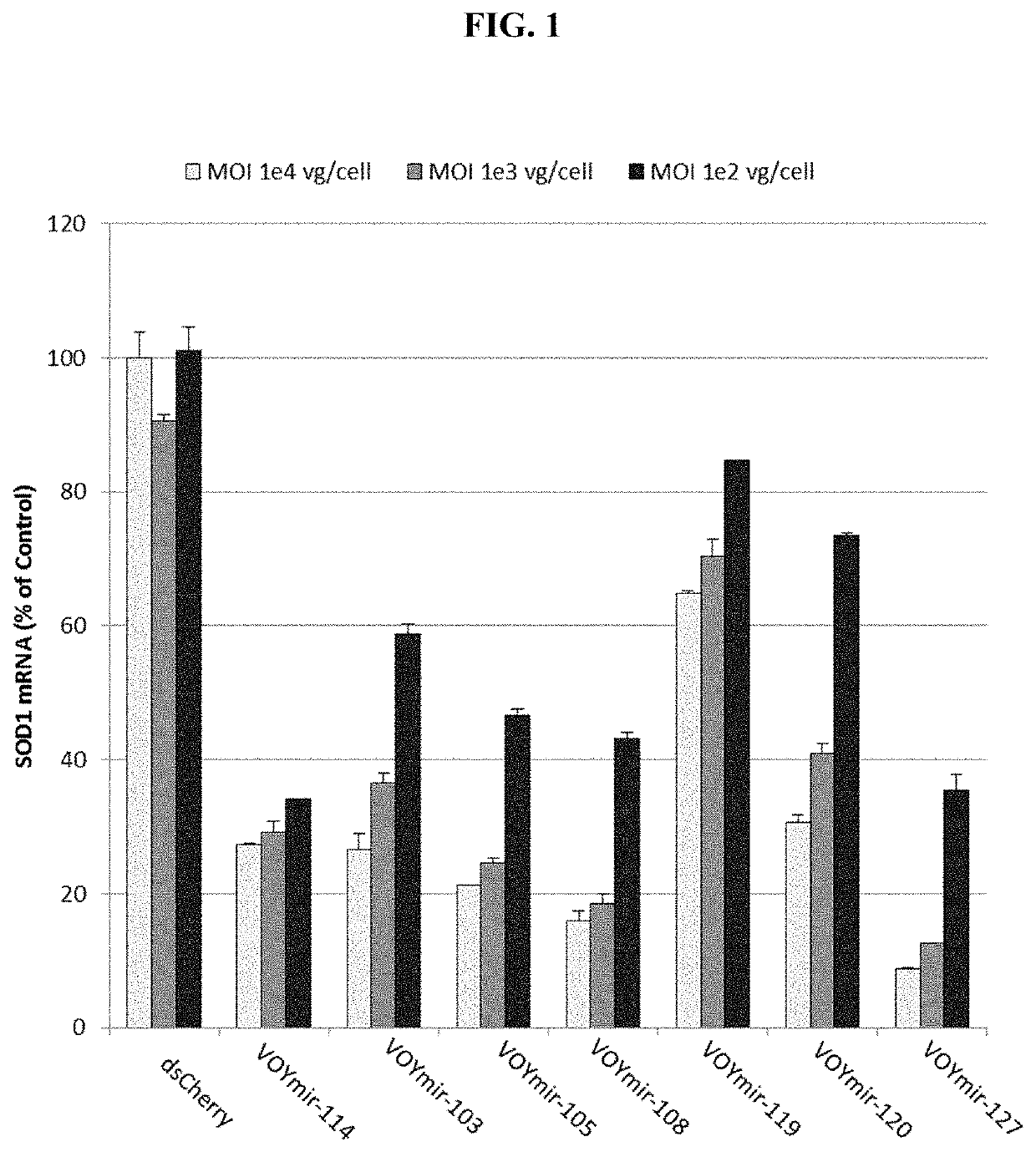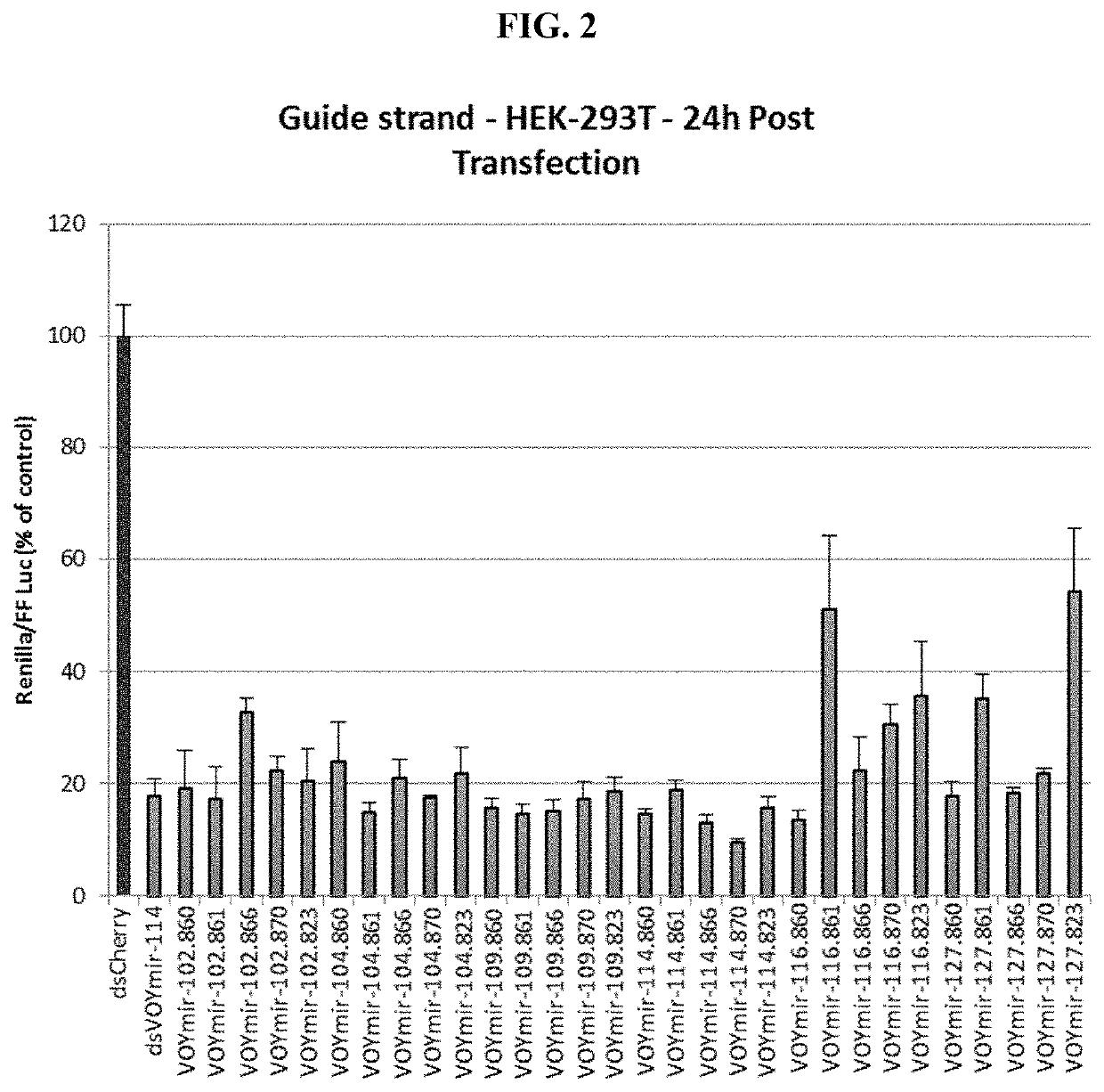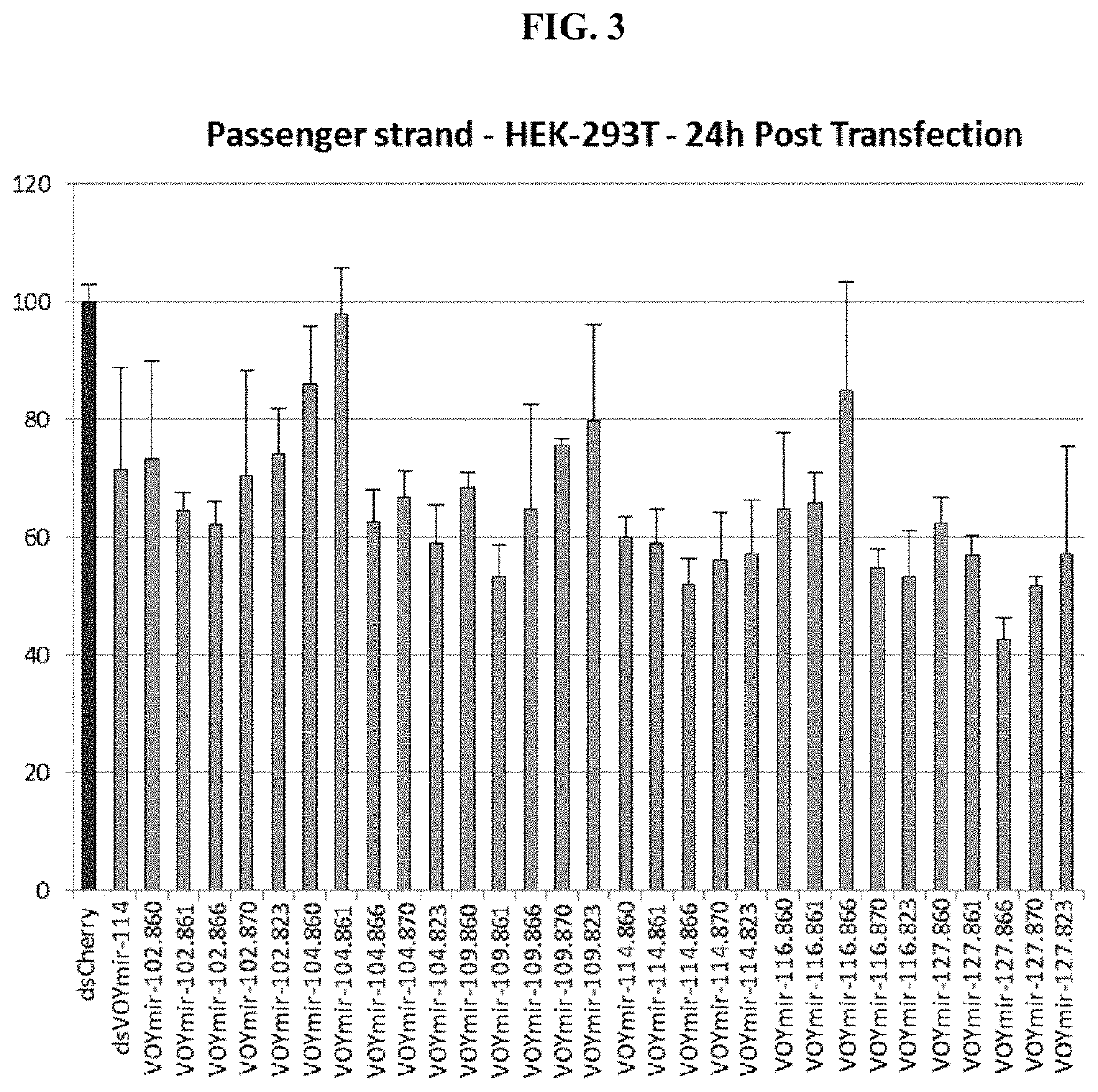Compositions and methods of treating amyotrophic lateral sclerosis (ALS)
a technology of amyotrophic lateral sclerosis and amyotrophic lateral sclerosis, applied in the field of modulatory polynucleotides, can solve the problems of progressive deterioration of motor function in patients, devastation of basic loss of motor neurons, and severe disruption of breathing ability of patients by progressive deterioration of motor function
- Summary
- Abstract
- Description
- Claims
- Application Information
AI Technical Summary
Benefits of technology
Problems solved by technology
Method used
Image
Examples
example 1
A Design and Synthesis
[0313]SOD1 siRNA Design
[0314]siRNA design was carried out to identify siRNAs targeting human SOD1 gene. The design used the SOD1 transcripts for human ((Genebank access NO. NM_000454.4 (SEQ ID NO: 1)), cynomolgus ((Genebank access NO. XM_005548833.1) from the NCBI Refseq collection (release 63) (SEQ ID NO: 2)) and rhesus (SOD1 transcript ENSMMUT00000002415 (SEQ ID NO: 3) from the Ensembl project (release 75)) as described in Table 2.
TABLE 2SOD1 gene sequencesSEQ IDSOD1 transcriptsAccess No.NO.Human SOD1 cDNA (981 bp)NM_000454.41cynomolgus SOD1 cDNA (465 bp)XM_005548833.12rhesus SOD1 cDNA (464 bp)ENSMMUT000000024153
[0315]The siRNA duplexes were designed to have 100% identity to the human SOD1 transcript for positions 2-18 of the antisense strand, and partial or 100% identity to the non-human primate SOD1 transcript for positions 2-18 of the antisense strand. In all siRNA duplexes, position 1 of the antisense strand was engineered to a U and position 19 of the se...
example 2
Screening of SOD1 siRNAs for Human SOD1 mRNA Suppression
[0318]Human SOD1 targeting siRNAs (described in Table 3) were assayed for inhibition of endogenous SOD1 expression in HeLa cells, using the bDNA (branched DNA) assay to quantify SOD1 mRNA. Results from two dose assays were used to select a subset of SOD1 dsRNA duplexes for dose response experiments in 4 types of cultured cells to calculate IC50's.
Cell Culture and Transfection
[0319]HeLa cells were obtained from ATCC (ATCC in Partnership with LGC Standards, Wesel, Germany) and cultured in HAM's F-12 Medium (Biochrom GmbH, Berlin, Germany) supplemented to contain 10% fetal calf serum (Ultra-low IgG from GIBCO / Life Technologies) and 1% Pen / Strep (Biochrom GmbH, Berlin, Germany) at 37° C. in an atmosphere with 5% C02 in a humidified incubator.
[0320]For transfection with siRNA, HeLa cells were seeded at a density of 19,000-20,000 cells / well in 96-well plates. Transfection of siRNA was carried out with Lipofectamine 2000 (Invitrogen / L...
example 3
Screen of Selected SOD1 siRNAs Against Endogenous SOD1 mRNA Expression in SH-SY5Y Cells, U87 Cells and Primary Human Astrocytes
[0326]SH-SY5Y cells were obtained from ATCC (ATCC in Partnership with LGC Standards, Wesel, Germany) and cultured in Dulbecco's MEM (Biochrom GmbH, Berlin, Germany) supplemented to contain 15% FCS (Ultra-low IgG from GIBCO / Life Technologies), 1% L-Glutamine (Biochrom GmbH, Berlin, Germany) and 1% Pen / Strep (Biochrom GmbH, Berlin, Germany) at 37° C. in an atmosphere with 5% CO2 in a humidified incubator.
[0327]U87MG cells were obtained from ATCC (ATCC in Partnership with LGC Standards, Wesel, Germany) and cultured in ATCC-formulated Eagle's Minimum Essential Medium (ATCC in Partnership with LGC Standards, Wesel, Germany) supplemented to contain 10% FCS (Ultra-low IgG from GIBCO / Life Technologies) and 1% Pen / Strep (Biochrom GmbH, Berlin, Germany) at 37° C. in an atmosphere with 5% CO2 in a humidified incubator.
[0328]Primary human astrocytes were obtained from L...
PUM
 Login to View More
Login to View More Abstract
Description
Claims
Application Information
 Login to View More
Login to View More - R&D
- Intellectual Property
- Life Sciences
- Materials
- Tech Scout
- Unparalleled Data Quality
- Higher Quality Content
- 60% Fewer Hallucinations
Browse by: Latest US Patents, China's latest patents, Technical Efficacy Thesaurus, Application Domain, Technology Topic, Popular Technical Reports.
© 2025 PatSnap. All rights reserved.Legal|Privacy policy|Modern Slavery Act Transparency Statement|Sitemap|About US| Contact US: help@patsnap.com



